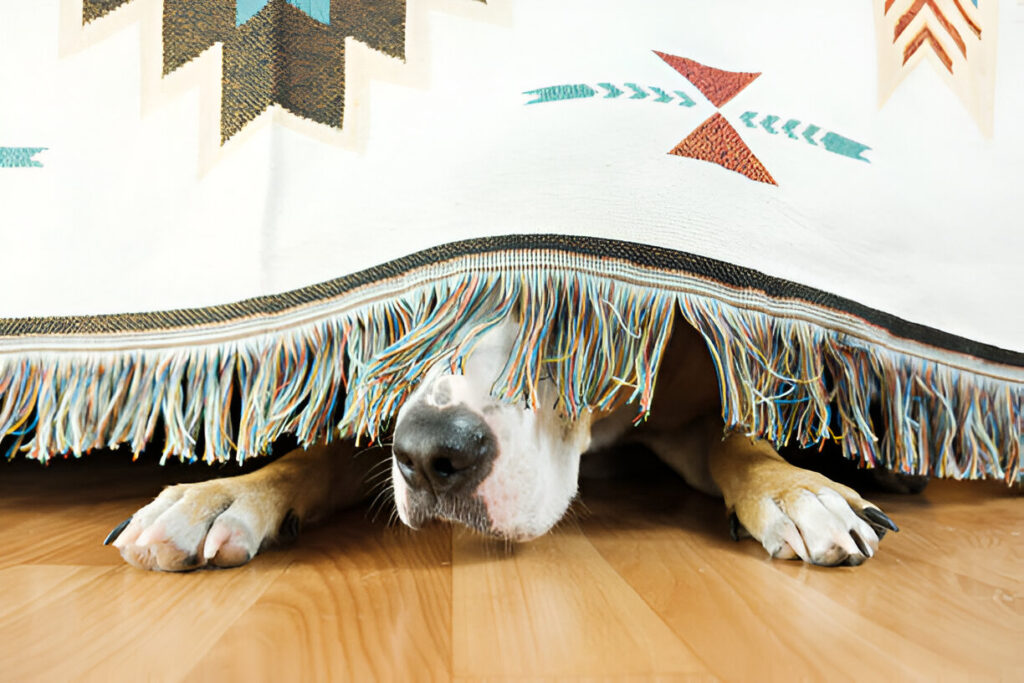Understanding Renters Insurance and Pet Damage
Does Renters Insurance Cover Pet Damage to Carpet? 1st Truth
Renters insurance is essential for tenants, protecting personal belongings in a rented home or apartment. It covers common risks like fire, theft, and vandalism, but what about pet-related damage? Pet owners often face unique challenges, especially when their pets cause harm to the property. Carpet damage is one of the most common issues. Understanding whether renters insurance covers pet damage to carpets is crucial for pet owners, as it can help ease financial stress and avoid unexpected expenses.

What Is Renters Insurance?
Renters insurance is a type of insurance policy that provides financial protection for individuals renting a home or apartment. It covers personal property, such as furniture, electronics, clothing, and other belongings, in case of damage, theft, or loss. While renters insurance is not required by law, it is often mandated by landlords or property managers to safeguard both the tenant and the property.
A standard renters insurance policy typically includes three main types of coverage:
Personal Property Coverage: This protects your belongings from events like fire, theft, vandalism, or certain natural disasters, such as a tornado or hailstorm.
Liability Coverage: This covers any legal expenses or medical bills if someone is injured while on your rented property. For example, if a guest slips and falls in your apartment, liability insurance may help cover the costs.
Additional Living Expenses (ALE): If your rental becomes uninhabitable due to a covered event, ALE helps cover the costs of temporary living arrangements, such as hotel stays or alternative housing.
Renters insurance is often affordable and can provide peace of mind, ensuring that you’re financially protected in the event of unexpected incidents. Understanding what renters insurance covers and how it works is essential for anyone looking to protect their home and belongings.
The Role of Renters Insurance in Protecting Your Property
Renters insurance plays a crucial role in safeguarding your personal belongings and property while you’re renting a home or apartment. This affordable coverage provides financial protection against unexpected incidents like theft, fire, or natural disasters, offering peace of mind to tenants. Without renters insurance, tenants are left responsible for replacing or repairing their possessions out of pocket, which can be a significant financial burden.
Beyond protecting your items, renters insurance also covers liability, which can be helpful if someone is injured in your rental space or if accidental damage occurs to the property. For instance, if you accidentally damage the carpet, walls, or fixtures in your rental unit, renters insurance could cover the cost of repairs, depending on the cause of the damage.
In addition, renters insurance may provide temporary living expenses if your rental home becomes uninhabitable due to a covered event, like a fire or water damage. With renters insurance, you are not only protecting your personal property but also ensuring you have the financial support to recover from unforeseen circumstances, making it an essential investment for any renter.
To maximize the benefits of renters insurance, it’s important to carefully review your policy and tailor it to your needs, including coverage for unique situations like pet-related damage.
Why Pet Damage Is a Concern for Renters

Why Pet Damage Is a Concern for Renters
Pet damage is a significant concern for renters because it can lead to costly repairs, potential disputes with landlords, and even the loss of a security deposit. Whether it’s scratches, stains, or chewing, pets can unintentionally cause significant wear and tear on carpets and other rental property features. For renters with pets, understanding the impact of pet damage is crucial to avoid unexpected financial burdens.
Many landlords include pet clauses in rental agreements to address potential damage, but even with these clauses in place, renters may not be fully protected if the damage exceeds what’s covered under their lease or insurance. Pet damage, especially to carpets, can be difficult and expensive to repair, often requiring professional cleaning or replacement.
Additionally, if the damage is severe, tenants could face legal action or be held liable for the costs, which could further complicate the rental experience. As a result, renters need to consider the potential consequences of pet damage and take proactive steps to prevent it. By understanding the risks and being prepared, pet owners can avoid unnecessary expenses and ensure a smooth, hassle-free rental experience.
What Types of Pet Damage Can Happen to Carpet?
Pets, especially those with a bit of mischief in their nature, can wreak havoc on carpets. Whether it’s the result of chewing, scratching, or staining, carpets can quickly lose their luster. The types of pet damage you might encounter range from small punctures caused by claws to large, unsightly stains from accidents. In some cases, pets may even burrow into the carpet, creating long-term damage to both the fabric and padding beneath.
Common Types of Pet Damage to Carpets
The most common forms of pet damage to carpets include:
- Stains: Pets can leave behind stains from urine, vomit, or feces. These stains can be difficult to remove, especially when they seep deep into the fibers.
- Scratches and Claws: Sharp claws can tear or rip carpet fibers, leaving visible damage that’s hard to repair without professional help.
- Odors: Even after a stain is cleaned, lingering odors can be a problem, especially in high-moisture areas like bathrooms or kitchens.
- Chewing: Pets, especially puppies, might chew on carpets, causing fraying and visible damage that can be expensive to fix.
How Pet Behavior Leads to Carpet Damage
Pets, by nature, often interact with their environment in ways that aren’t always ideal for a home’s décor. A dog might scratch the carpet when trying to get comfortable, or a cat might claw at it out of boredom. Pets with a tendency to chew may mistake the carpet for a toy, leading to visible damage. Additionally, younger pets or those experiencing anxiety may be more prone to causing accidents on the carpet, resulting in stains that are difficult to clean.
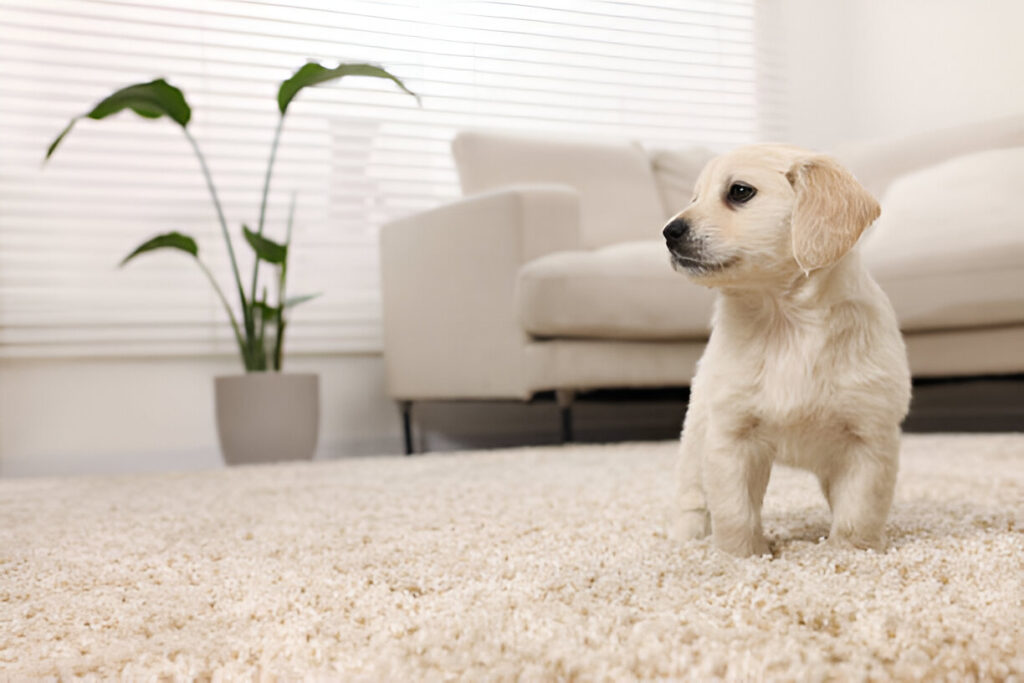
The Cost of Carpet Repair or Replacement
Repairing or replacing carpet due to pet damage can be costly, depending on the extent of the damage and the type of carpet in question. Small stains may only require cleaning, but larger issues like ripping or chewing may necessitate full replacement. The average cost for carpet replacement can range from $1 to $5 per square foot, while professional cleaning can cost between $100 and $300. These costs quickly add up, leaving tenants with a hefty bill to handle.
Does Renters Insurance Cover Pet Damage to Carpet?
When it comes to renters insurance, pet damage to carpets is typically not covered under standard policies. Renters insurance usually covers damage caused by accidents, fire, or theft, but pet-related issues are a gray area. Understanding how your policy defines damage and what is excluded is crucial in determining whether you’re covered.
Breaking Down the Basics of Renters Insurance Coverage
Renters insurance generally offers two types of coverage: liability and property. Liability coverage may address some damages caused by pets, while property coverage typically protects against damage caused by unforeseen events like fire or vandalism. However, pet-related damage, particularly to carpets, is often excluded under standard policies.
What Is Typically Covered Under Renters Insurance?
Renters insurance offers valuable protection for tenants, covering a variety of potential risks and losses. While the specific coverage may vary depending on the insurer and policy, some key areas are generally included:
1. Personal Property Protection:
One of the primary benefits of renters insurance is coverage for personal belongings. If your possessions, such as furniture, electronics, clothing, or other valuables, are damaged or stolen due to events like fire, theft, vandalism, or a natural disaster, renters insurance typically provides financial reimbursement or replacement.
2. Liability Coverage:
Renters insurance often includes liability protection. This covers you if someone is injured while on your rental property and decides to sue for medical expenses or property damage. Liability coverage helps with legal fees and any settlements, making it an essential part of any renters insurance policy.
3. Additional Living Expenses (ALE):
If your rental home becomes uninhabitable due to a covered event, such as a fire or severe water damage, renters insurance may cover the cost of temporary living arrangements. This can include hotel bills, meals, and other necessary expenses during repairs.
4. Loss of Use Coverage:
Similar to ALE, loss of use coverage kicks in if your rental becomes unlivable, ensuring you can maintain your normal standard of living until the property is repaired or replaced. This may cover everything from rent to daily necessities.
5. Medical Payments to Others:
If a guest gets injured while in your rental property (but not due to your negligence), medical payment coverage can help pay for their medical bills. This is typically a smaller amount and is often included in the liability section of a renters insurance policy.
While renters insurance covers a range of events and damages, it’s important to note that certain incidents, such as pet damage to carpets, may not be covered unless specified in your policy. Always review your policy carefully to understand the full scope of your coverage and whether any additional endorsements or riders are needed to protect your specific needs.
When Does Renters Insurance Not Cover Pet Damage?
Most renter’s insurance policies exclude pet damage in their terms and conditions. This exclusion means that unless the damage is the result of a fire, flood, or another covered peril, renters insurance will not pay for repairs to pet-damaged carpets. Furthermore, if the damage was caused by intentional actions (e.g., a pet chewing through the carpet), it is unlikely to be covered.
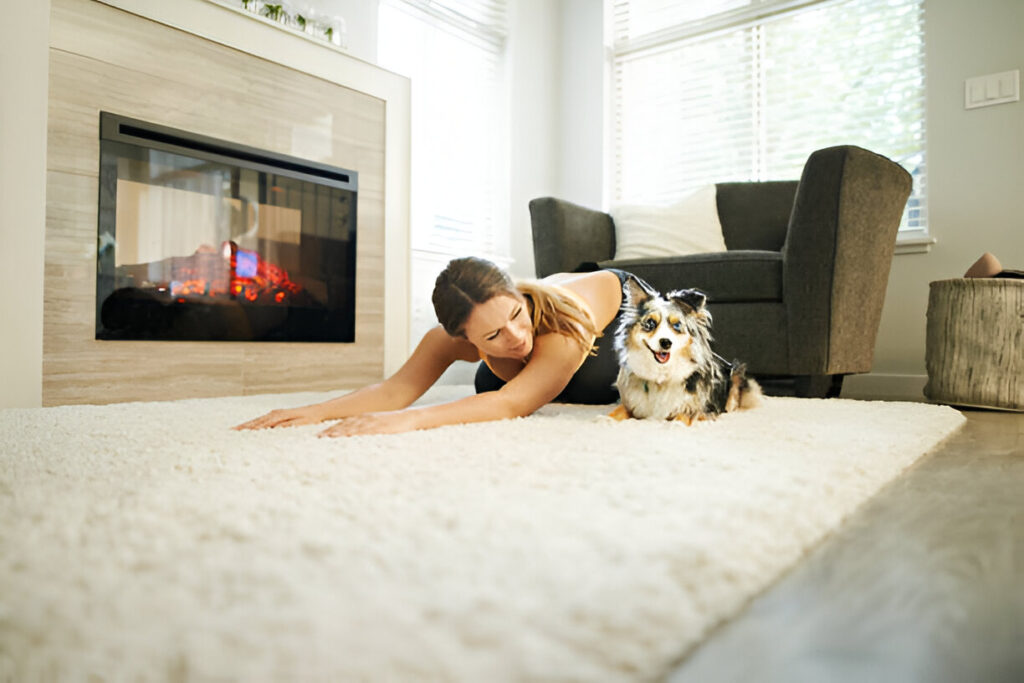
The Pet Clause: What’s Included in Renters Insurance Policies?
Insurance policies may contain a “pet clause,” which outlines the terms and conditions for pet owners. This clause typically includes liability coverage if your pet causes injury or damage to someone else’s property. However, it rarely covers damage to your property, such as carpet damage caused by your pet.
The Fine Print: How Insurance Policies Address Pets
Most insurance policies do not explicitly cover pet-related property damage, particularly when it comes to carpets. The fine print may specify that damage caused by pets is excluded from coverage, leaving pet owners without a financial safety net in the event of carpet damage. It’s essential to read the policy thoroughly and understand any exclusions before making a claim.
Pet-Related Damage Exclusions: What to Look For
When reviewing your renter’s insurance policy, look for language regarding pet-related exclusions. Terms like “wear and tear,” “intentional damage,” and “pet liability” may indicate that pet damage to carpets is not covered. If you’re unsure, reach out to your insurer for clarification before you make any assumptions.
What If You’re Dealing with Accidental Pet Damage?
In cases of accidental pet damage, you may wonder if your renter’s insurance policy would cover the costs. While some policies may offer limited coverage for accidental damage, this is not a guarantee. Each insurer has its own rules regarding pet-related claims, and it’s important to understand what qualifies as “accidental” versus “intentional” damage.
Can Accidental Pet Damage Be Covered?
Accidental damage caused by a pet, such as an accidental stain from urine or vomit, may be covered under certain circumstances. However, coverage is not guaranteed. If your pet causes unintentional damage, the best course of action is to report it immediately to your insurer to determine if the claim is eligible.
How Accidental Damage Differs from Intentional Damage
Accidental pet damage is usually covered under renters insurance because it is unforeseen and unintentional. This can include instances like pets accidentally knocking over a plant, spilling food or liquids, or even scratching the carpet out of curiosity. On the other hand, intentional damage caused by your pet, such as chewing up the carpet or deliberately tearing it, will likely not be covered. Renters insurance generally excludes damage that is done purposefully or through neglect.
Steps to Take If Your Pet Causes Accidental Damage
If you find yourself dealing with accidental pet damage to your carpet, follow these steps:
Document the Damage – Take clear photos of the damage to serve as evidence. This will be important if you need to file a claim.
Contact Your Insurance Provider – Get in touch with your renter’s insurance company to clarify whether accidental pet damage is covered under your policy.
Submit a Claim – If your policy covers accidental damage, be sure to follow the insurer’s claims process. Provide all necessary documentation, including photos of the damage and any receipts for repair costs.
Is Pet Damage to Carpet Considered Normal Wear and Tear?
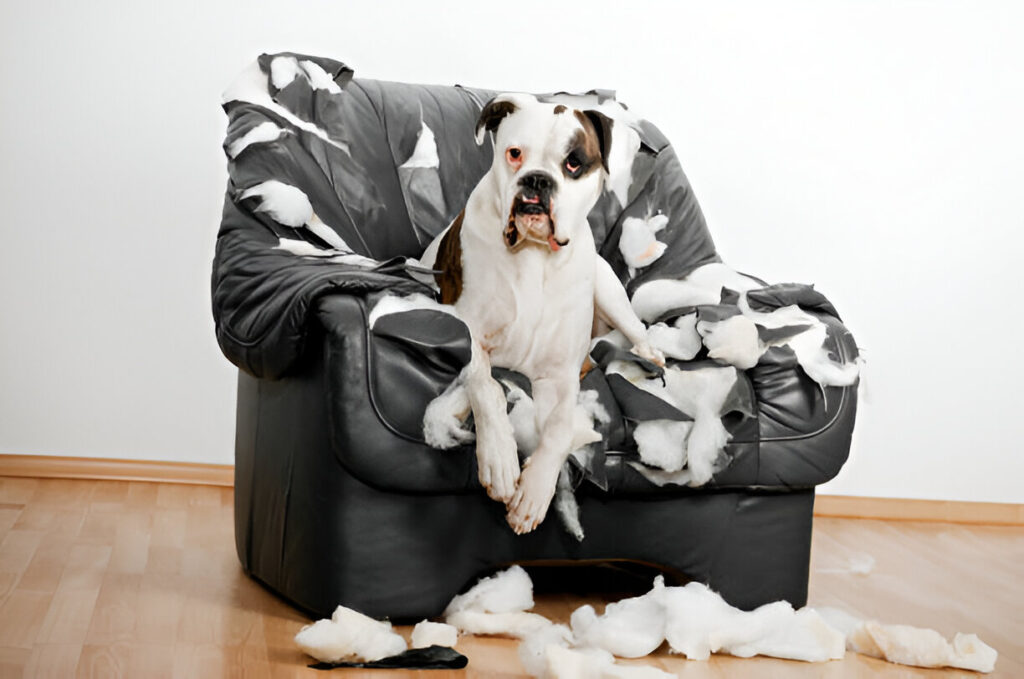
Carpets experience wear and tear over time, which is generally excluded from renters insurance. Pet damage, however, falls into a separate category and is usually not classified as normal wear and tear. The distinction between regular carpet aging and pet-related damage can be difficult, but it’s important to understand how insurance defines these terms.
Understanding Wear and Tear in Renters Insurance Policies
Wear and tear refers to the natural deterioration of an item due to normal use over time. Renters’ insurance policies typically exclude coverage for wear and tear, as this is considered a part of the aging process. Pet damage, such as tearing or chewing, is usually treated as beyond normal wear and tear, which may lead to issues when filing a claim.
The Difference Between Wear and Tear and Pet Damage
Pet damage is distinct from wear and tear because it involves specific behaviors that lead to visible and sometimes severe damage. While wear and tear might include fading or fraying, pet damage could result in permanent stains, scratches, or holes that require costly repairs or replacements. Understanding this difference is key when determining if your insurance will cover the damage.
Can You Get Additional Coverage for Pet Damage?
If you’re concerned about pet damage to your carpets, you may be able to purchase additional coverage. Some insurers offer optional add-ons to renters insurance policies that cover pet damage. These add-ons may include pet liability insurance or damage protection, which can provide extra peace of mind for pet owners.
How to Add Pet Damage Coverage to Your Renters Insurance
To add coverage for pet damage, contact your insurance provider to inquire about available options. Some companies offer special endorsements or riders that can be added to a standard renters insurance policy. Be sure to clarify the specifics of the coverage to ensure it meets your needs and protects against potential pet damage.
Understanding Pet Liability Coverage
Pet liability coverage is often included in renters insurance policies and can help cover costs if your pet causes harm to others or their property. While it may not directly cover carpet damage, it can protect you from liability if your pet’s actions lead to a broader claim, such as damaging a neighbor’s property.
What to Do If Your Pet Damages the Carpet in Your Rental
If your pet causes damage to the carpet, it’s essential to act quickly. Document the damage with clear photographs and detailed descriptions. Notify your landlord as soon as possible and determine whether your renter’s insurance policy might cover the cost of repairs. If it does not, consider seeking other avenues for compensation, such as a personal injury claim.
Steps to Take Immediately After Carpet Damage
Immediately address the damage by cleaning the area to prevent further harm. For stains, use pet-safe cleaning solutions and blot the area carefully. For scratches or tears, try to minimize further damage until a professional can assess the situation. Reporting the issue to your insurer promptly is crucial to ensure the best chance of reimbursement.
How to Document Pet Damage for Insurance Claims
To document pet damage effectively, take multiple clear photos of the affected area from different angles. Record any relevant details, such as the size of the damage and the type of carpet. Include receipts for any cleaning or repair work done. This information will strengthen your case if you choose to submit a claim.
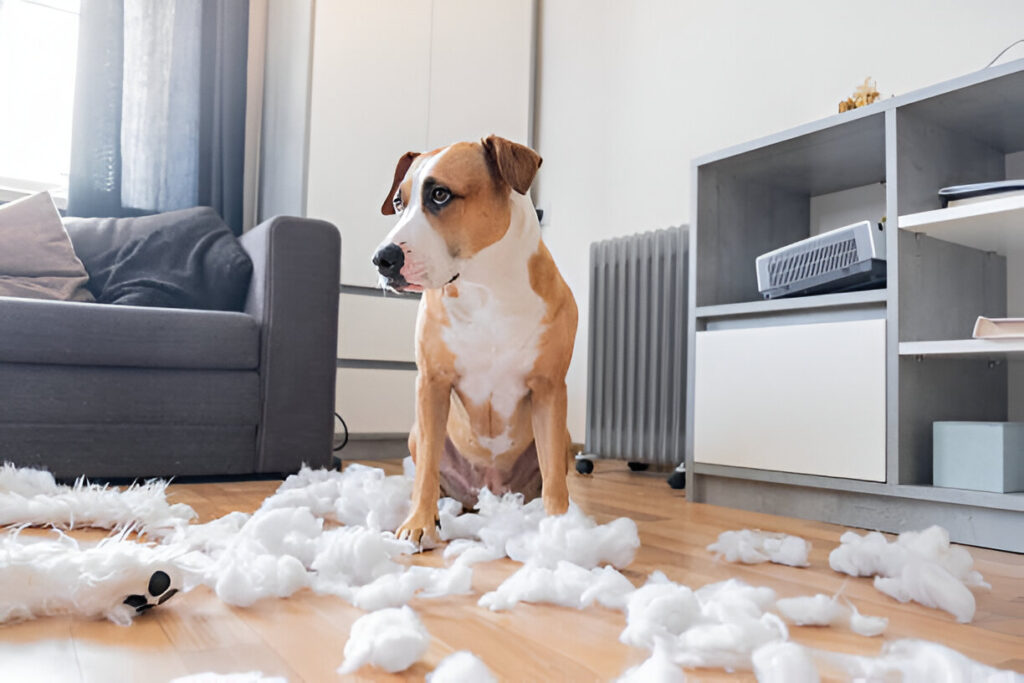
Tips for Preventing Pet Damage to Carpets
Preventing pet damage to carpets is always better than dealing with the aftermath. Start by training your pet to avoid carpeted areas. Use protective mats or rugs in high-traffic zones, and keep the carpet clean to prevent accidents. Additionally, keep pet nails trimmed to reduce the likelihood of scratches.
Behavioral Training for Pets to Protect Your Carpet
Training your pet to avoid damaging the carpet is one of the most effective strategies. Positive reinforcement techniques can help pets learn where they are allowed to go and what they should avoid. It may take time and patience, but consistency in training can lead to better behavior.
Protective Measures and Carpet Care Tips for Pet Owners
In addition to training, protective measures like using rugs, mats, or even furniture covers can prevent carpet damage. Regular carpet cleaning is also essential for pet owners to remove pet hair, dirt, and odors. Investing in pet-safe cleaning solutions and vacuuming frequently can extend the life of your carpets.
What to Do If Renters Insurance Won’t Cover Pet Damage to Carpet
If your renter’s insurance policy doesn’t cover pet damage to your carpet, you may feel stuck with the repair costs. However, all is not lost. Consider negotiating with your landlord for a possible resolution, such as splitting the cost of repairs. You may also explore other forms of insurance or warranty options that cover carpet damage.
How to Handle Denied Claims for Pet Damage
If your renter’s insurance claim is denied, don’t panic. Review your policy to ensure that pet damage is excluded and gather all necessary documentation. If you feel the denial was unjust, appeal the decision by providing additional evidence and communicating directly with your insurer.
Exploring Other Options for Carpet Repair Coverage
If renters insurance isn’t an option for covering pet damage, look into other specialized policies or services. Some carpet manufacturers offer warranties that may cover damage caused by pets, or you could consider a separate pet damage insurance plan. Research all available options to ensure you’re protected.
The Impact of Pet Damage on Your Rental Agreement
When renting with a pet, your lease agreement often includes specific clauses about pet-related damage. Some leases may hold tenants financially responsible for any damage their pets cause, including carpet stains and tears. Understanding these terms will help you anticipate any costs and avoid disputes with your landlord.
What to Know About Your Lease Agreement and Pets
Before adopting a pet, review your lease agreement thoroughly. Many landlords require tenants to pay a pet deposit or charge a monthly pet fee. Some may even have strict policies about what types of pets are allowed. Being informed about these policies can help you avoid surprises when dealing with pet damage.
How Pet Damage Could Affect Your Security Deposit
Pet damage can directly impact your security deposit. If your pet causes significant harm to the carpet or other parts of the rental property, the landlord may deduct repair costs from your deposit. In some cases, if the damage is severe enough, it could lead to disputes or even legal action.
Real Life Stories: Renters Who Faced Pet Damage Claims
Many renters have experienced the frustration of dealing with pet-related damage claims. Some have learned the hard way that pet damage is often not covered by renters insurance. Sharing real-life stories can help others understand the challenges and prepare for potential issues before they arise.
Personal Experiences of Renters Dealing with Pet Damage
From small accidents to major carpet destruction, renters have faced a variety of challenges when it comes to pet damage. These experiences can provide valuable insights into how insurance works, what to do in the event of damage, and how to prevent costly repairs.
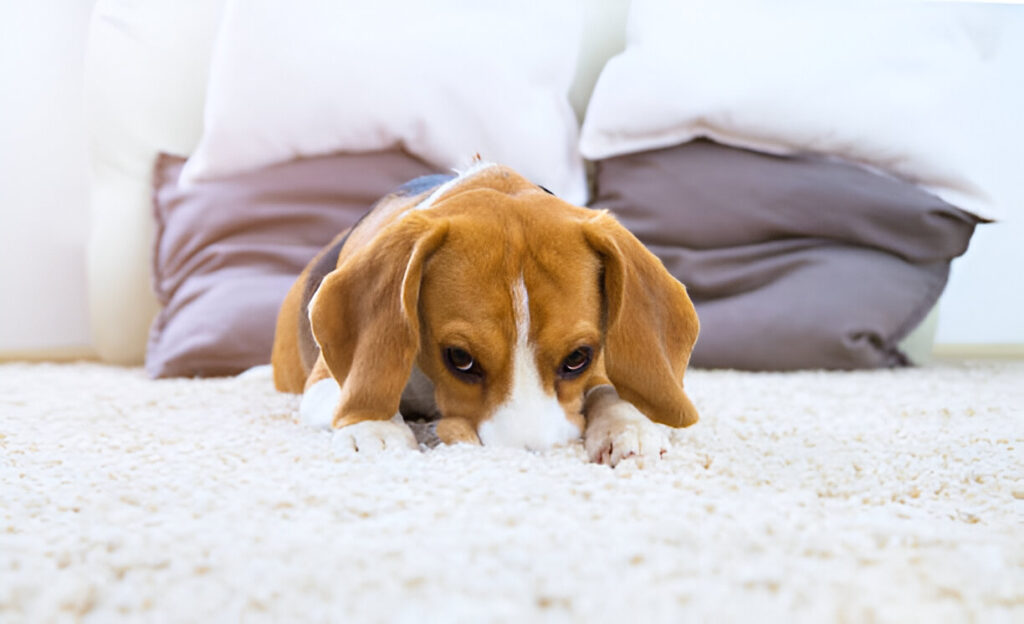
Lessons Learned from Renters Insurance Claims
Renters who have navigated pet damage claims often share similar lessons: always read the fine print of your policy, document everything, and take preventive measures. These lessons can help others avoid costly mistakes and handle future pet damage situations with confidence.
Conclusion: Is Renters Insurance Worth It for Pet Owners?
Renters insurance is a valuable safeguard for tenants, but when it comes to pet damage to carpets, coverage is often limited. While renters insurance typically covers accidental damage, pet-related issues may not be included. It’s crucial for pet owners to carefully review their policies and consider additional coverage options if necessary. Preventive measures like pet training and carpet protection can help minimize damage, ensuring a smooth rental experience.
FAQ: Is Renters Insurance Worth It for Pet Owners?
Does renters insurance cover pet damage to carpets?
Most renter’s insurance policies do not cover pet damage to carpets. However, some insurers may offer optional add-ons or riders for pet-related damage.
Can accidental pet damage be covered by renters insurance?
Accidental damage might be covered under certain circumstances, depending on the specifics of your policy. It’s best to check with your insurer to understand the terms.
Is pet damage considered wear and tear?
No, pet damage is typically not considered wear and tear. Pet-related damage is usually treated as a separate category and may not be covered under standard renters insurance.
How can I protect my carpet from pet damage?
Training your pet, using protective rugs or mats, and cleaning regularly can help prevent carpet damage. Additionally, consider using pet-safe cleaning solutions to maintain your carpet’s condition.
Can I add coverage for pet damage to my renter’s insurance?
Yes, some insurers offer add-ons for pet damage coverage. Contact your insurance provider to explore options that fit your needs.
Can renters insurance cover carpet replacement due to pet damage?
Typically, renters insurance will not cover carpet replacement for pet damage unless specified in your policy. You may need to consider additional coverage options for pet-related damage.
How can I file a claim for pet damage to carpets?
To file a claim for pet damage, contact your insurance provider, provide detailed documentation of the damage, and follow their instructions for submitting the claim.
What if my renter’s insurance policy excludes pet damage?
If your policy excludes pet damage, you may need to explore other options, such as adding a pet liability rider or purchasing a separate pet damage insurance policy.
Does renters insurance cover pet damage to carpets?
Most renter’s insurance policies do not cover pet damage to carpets. However, some insurers may offer optional add-ons or riders for pet-related damage.
Can accidental pet damage be covered by renters insurance?
Accidental damage might be covered under certain circumstances, depending on the specifics of your policy. It’s best to check with your insurer to understand the terms.
Is pet damage considered wear and tear?
No, pet damage is typically not considered wear and tear. Pet-related damage is usually treated as a separate category and may not be covered under standard renters insurance.
How can I protect my carpet from pet damage?
Training your pet, using protective rugs or mats, and cleaning regularly can help prevent carpet damage. Additionally, consider using pet-safe cleaning solutions to maintain your carpet’s condition.
Can I add coverage for pet damage to my renter’s insurance?
Yes, some insurers offer add-ons for pet damage coverage. Contact your insurance provider to explore options that fit your needs.
<script type="application/ld+json">
{
"@context": "https://schema.org",
"@type": "BlogPosting",
"mainEntityOfPage": {
"@type": "WebPage",
"@id": "https://yourpetsdoc.com/wp-admin/post.php?post=996&action=edit"
},
"headline": "Does Renters Insurance Cover Pet Damage to Carpet? 1st Truth",
"description": "Renters insurance is essential for tenants, protecting personal belongings in a rented home or apartment. It covers common risks like fire, theft, and vandalism, but what about pet-related damage?",
"image": "https://yourpetsdoc.com/wp-content/uploads/2025/02/does-renters-insurance-cover-pet-damage-to-carpet-6-1024x683.jpg",
"author": {
"@type": "Person",
"name": "yourpetsdoc.com",
"url": "https://yourpetsdoc.com/wp-admin/edit.php"
},
"publisher": {
"@type": "Organization",
"name": "yourpetsdoc.com",
"logo": {
"@type": "ImageObject",
"url": "https://yourpetsdoc.com/"
}
},
"datePublished": "2025-02-07",
"dateModified": "2025-02-07"
}
</script>